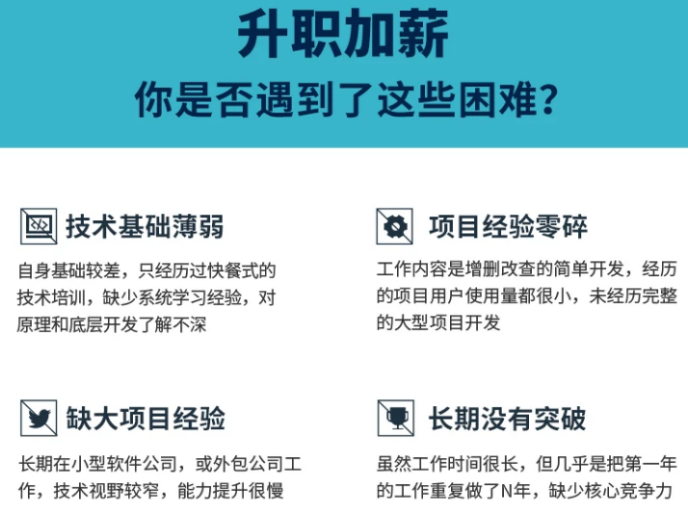
C++——文件操作
C++中输入输出是通过流对象进行操作,对于文件来说写文件就是将内容从程序输出到文件,需要用到写文件流ofstream;而读文件就是将内容从文件输入到程序,需要用到读文件流ifstream;这两个文件流类都包含在头文件中,对文件操作需要包含。
一键AI生成摘要,助你高效阅读
问答
·
一、文本文件
C++中输入输出是通过流对象进行操作,对于文件来说写文件就是将内容从程序输出到文件,需要用到写文件流ofstream;而读文件就是将内容从文件输入到程序,需要用到读文件流ifstream;这两个文件流类都包含在头文件<fstream>中,对文件操作需要包含<fstream>。
(一)写文件
文本文件写入主要包括以下步骤:
- 包含头文件:#include<fstream>
- 创建文件流对象: ofstream ofs;
- 以写入方式打开文件:ofs.open("文件路径",ios::out);
- 写入内容:ofs<<"写入内容";
- 关闭文件:ofs.close();
#include<iostream>
#include<fstream>
using namespace std;
int main(int argc, char const *argv[]) {
ofstream ofs;
ofs.open("test.txt", ios::out);
ofs << "姓名:张三" << endl;
ofs << "年龄:20" << endl;
ofs.close();
return 0;
}(二)打开方式
| 打开方式 | 描述 |
| ios::in | 读取方式打开文件。若文件不存在打开失败 |
| ios::out | 写入方式打开文件。若文件存在,清空后写入;文件不存在,创建后写入 |
| ios::ate | 初始位置:文件末尾。单独使用或和ios::out合用没有区别:清空后写入或创建后写入;和ios::in合用,若文件存在末尾可写入,若文件不存在打开失败 |
| ios::app | 末尾追加。单独使用或和ios::out/in合用没有区别:文件不存在时创建写入,存在时末尾追加; |
| ios::trunc (截断) | 单独或者和out合用与out无明显差别,文件存在清空后写入,不存在,创建写入; |
| ios::binary | 以二进制方式写入或读取文件 |
对于ate和trunc一直get不到使用场景,不太理解。
(三)读取文件
- 文本文件读取主要包含以下步骤:
- 包含头文件:#include<fstream>
- 创建流对象:ifstream ifs;
- 以读取模式打开文件:ifs.open("文件路径+文件名/文件名",ios::in)
- 读取数据:常用的有4中方法。
- ifs>> int,char,float,char *,string 等等。可读取整形、浮点型、字符型、字符串等等,读取字符串时可将读取内容存入字符数组,也可存入string;读取字符串时一次读一行,遇到空格、制表符、换行符或读取到字符数组长度-1个字符时返回。读取成功返回istream&,读取失败返回false。
- ifs.getline(char *buf,int size,char delim='\n');一次读取一行,存入字符数组;遇到换行符或者读取到sizeof(buf)-1个字符返回(最后一个字符需要自动添加结束字符\0);遇到限定字符delim提前返回。读取失败返回false。
- getline(istream& ifs,string& str,char delim='\n');一次读取一行,存入字符串;遇到换行符和限定字符delim提前返回。读取失败返回false。
- int get();/ istream& get(char *buf, int size,char delim='\n');/istream& get(char c)常用的ifstream成员get函数有这几种重载;同样读取内容存入字符数组时遇到限定字符delim时提前返回,后面两种读取失败返回false。
#include<iostream> #include<fstream> using namespace std; #include<string> //写文件 void write() { ofstream ofs("test.txt", ios::out); if (ofs.is_open()) { ofs << "姓名:张三" << endl; ofs << "年龄:20" << endl; ofs.close(); } } //方法1 void func(ifstream& ifs, char buf1[1024], string buf2) { //while (ifs >> buf1) { // cout << buf1 << endl; //} while (ifs >> buf2) { cout << buf2 << endl; } } //方法2 void func(ifstream& ifs, char buf1[1024]) { while (ifs.getline(buf1, 1024)){ cout << buf1 << endl; } } //方法3 void func(ifstream& ifs, string& buf2) { while (getline(ifs, buf2)) { cout << buf2 << endl; } } //方法4 void func(ifstream& ifs, char c) { while (ifs.get(c)) { cout << c; } } void doWork(char buf1[1024], string& buf2, char c ) { ifstream ifs("test.txt", ios::in); if (ifs.is_open()) { if (c == 1) { func(ifs, buf1, buf2); }else if (c == 2) { func(ifs, buf1); } else if (c == 3) { func(ifs, buf2); } else if (c == 4) { func(ifs, c); } ifs.close(); } } int main(int argc, char const *argv[]) { char buf1[1024]; string buf2; char c; write(); doWork(buf1, buf2, 1); doWork(buf1, buf2, 2); doWork(buf1, buf2, 3); doWork(buf1, buf2, 4); return 0; }
二、二进制文件
(一)二进制文件写入
具体步骤:
- 包含头文件:#include<fstream>
- 创建文件流:ofstream ofs;
- 以二进制方式打开文件:ofs.open("文件名",ios::binary|ios::out);
- 写入数据:调用成员函数ostream& write(const char * buffer,int len); ofs.write((const char*)ptr,sizeof(*ptr)); 字符指针buffer指向内存中一段储存空间,len是要写入字节数。
- 关闭文件:ofs.close();
(二)二进制文件读取
具体步骤:
- 包含头文件:#include<fstream>
- 创建文件流:ifstream ifs;
- 以二进制方式打开文件:ifs.open("文件名",ios::binary|ios::in);
- 读取数据:调用成员函数ifstream& read((char*)buf,sizeof(buf)); buf是读取内容的缓存区强转为(char*),按照单个字节计算读取内容。
- 关闭文件:ifs.close();
#include<iostream>
using namespace std;
#include<fstream>
#include<string>
class Person {
public:
string m_Name;
int m_Age;
};
void write(void) {
Person p = { "李四",21 };
ofstream ofs("test.dat", ios::binary | ios::out);
if (ofs.is_open()) {
ofs.write((char*)&p, sizeof(p));
ofs.close();
}
}
void read(void) {
Person p;
ifstream ifs("test.dat", ios::binary | ios::in);
if (ifs.is_open()) {
ifs.read((char*)&p, sizeof(p));
ifs.close();
}
cout << "姓名:" << p.m_Name << endl;
cout << "年龄:" << p.m_Age << endl;
}
void test(void) {
write();
read();
}
int main(int argc, char const** argv) {
test();
return 0;
}更多推荐
 已为社区贡献2条内容
已为社区贡献2条内容










所有评论(0)